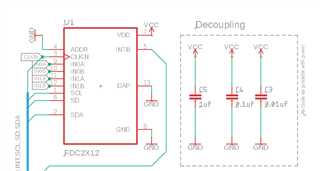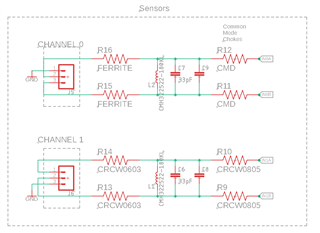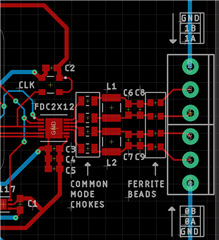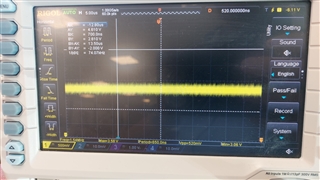Other Parts Discussed in Thread: FDC2112
I am working on two pcb's, one of them with FDC2112 and one with FDC2212.
I have the same problem in both. I cannot change the Vpp of the channels using the IDRIVE registers.
I will attach photos of the schematic and pcb and the register settings that i am using.
The setting are:
Single channel operation, external 40MHz crystal, HIGH_CURRENT_DRV -> Disabled, SENSOR_ACTIVATE_SEL -> use idrive.
Channel 0 works in differential configuration with two plates (12.5cm x 10cm) attached to IN0A and IN0B respectively.
channel config:
| RCOUNT | 0x200 |
| OFFSET | 0x00 |
|
SETTLE COUNT |
0x1E |
| IDRIVE | - |
| FIN_SEL | 0b10 |
| FREF_DIV | 2 |
Config:
| AUTOSCAN | 0 |
| RR_SEQUENCE | 0 |
| ACTIVE_CHANNEL | 0 |
| OUTPUT_GAIN | 0 |
| DEGLITCH | 0b101 |
| SENSOR_ACT_SEL | 0b1 |
| CLK_SRC | 0b1 |
| CURRENT_DRV | 0 |
| FREF | 20000 |
The board is powered through an esp32 voltage regulator which is a bit noisy. The power supply on the FDC2x12 power pin is at 3.3V with ~= 350mV noise.
I would appreciate if someone could help me troubleshoot this issue!





